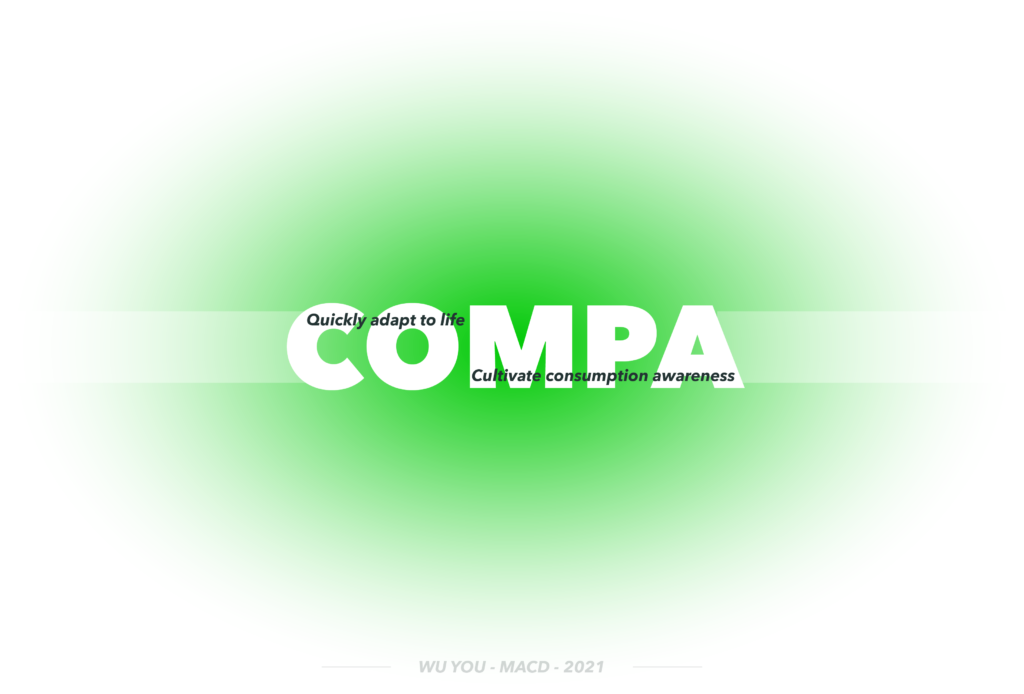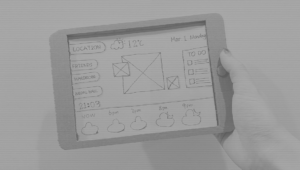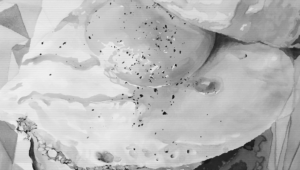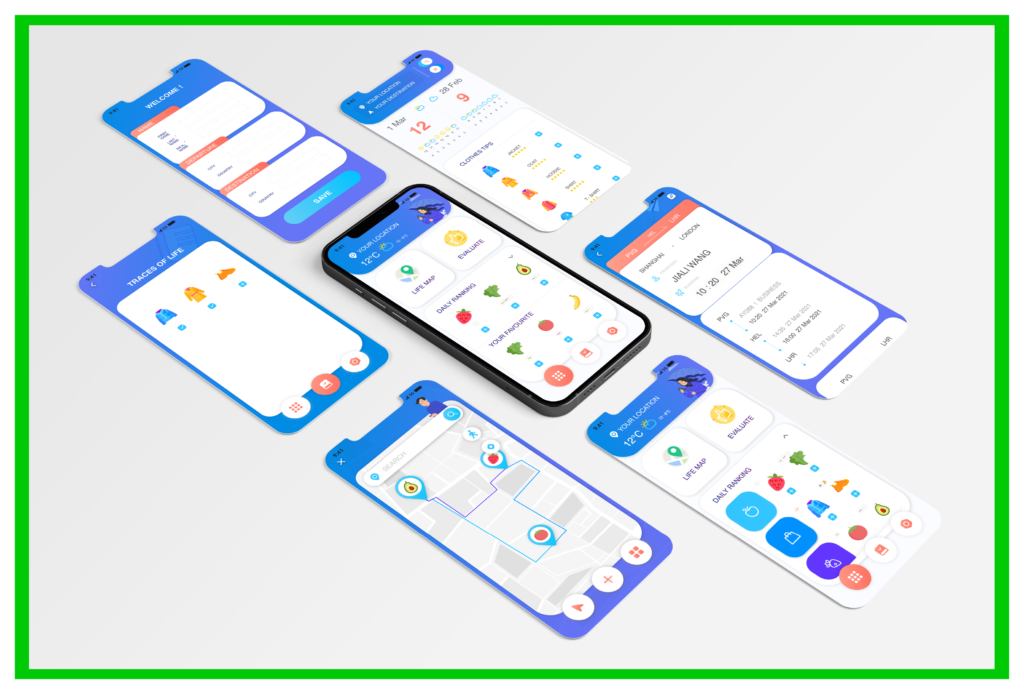
The fourth project is a design about consumer awareness. After communicating the content of Pechakucha, I made improvements and in-depth details on my design direction.
- Inspiration
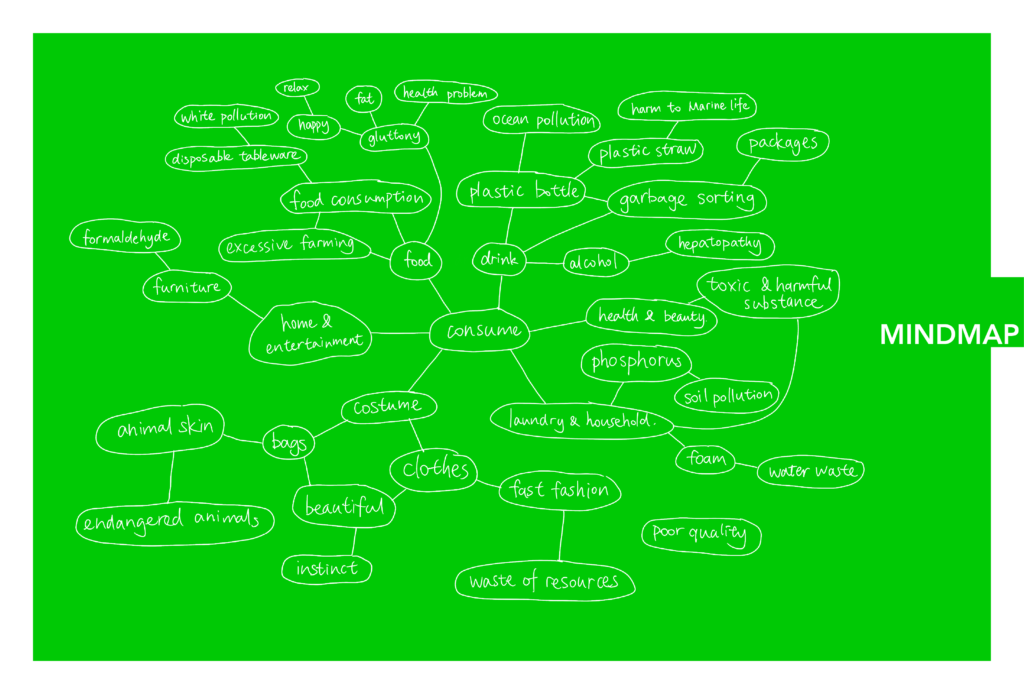
I started thinking about the subject of conscious consumption from the issue of food. I observed my living environment. As an international student who has just arrived in a new environment, I have noticed that food waste is very specific and common in such migrating groups. Even more than food waste, from daily necessities to daily material consumption, new residents always have a lot of unnecessary consumption behaviors in the process of adapting to the environment due to various usage habits, lifestyles, taste preferences and other differences. The idle or wasted materials caused by these unnecessary consumption have caused rounds of repeated useless consumption.
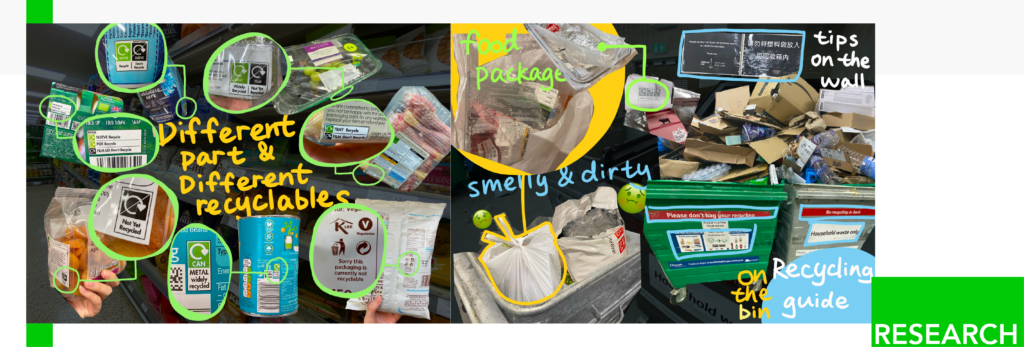
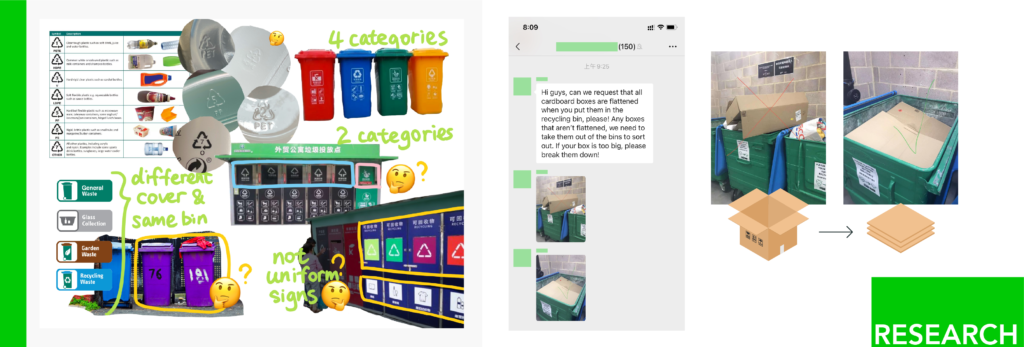
I did some more in-depth research, and my idea is to help international students avoid unnecessary living expenses when they move to a new environment. Thereby reducing the waste of resources caused by blind consumption.
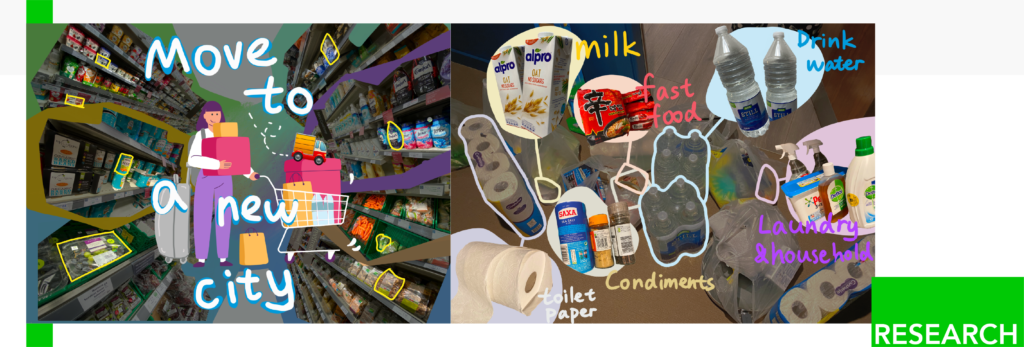

I noticed that many foreign students friends around me would spend a lot of wronged money when they first came to a foreign country. Because I just moved to an unfamiliar environment, the luggage I can bring is also limited. In order to meet the basic needs of life, people often have to purchase a lot of daily necessities and foods. However, because of the lack of understanding of local products, it is very possible to buy some unneeded items. The purchased items become household garbage after use, and the garbage classification policies in different regions are different, and even there are big differences. I hope I can do something to help them reduce unnecessary economic expenses from the purchase to the generation of garbage, and to better join the process of garbage classification and resource recovery.
It means starting a new life in a more environmentally friendly way.
- Questionnaire
I did a survey. I found that the main reason why most people can successfully adapt to their new life is that they spend a lot of time and energy on the Internet searching for relevant strategies. Or exchange life experiences with friends who already live in the local area. However, this does not avoid the cost of unjustified money. Although the unit price of daily necessities is not high, it is still the main source of waste.
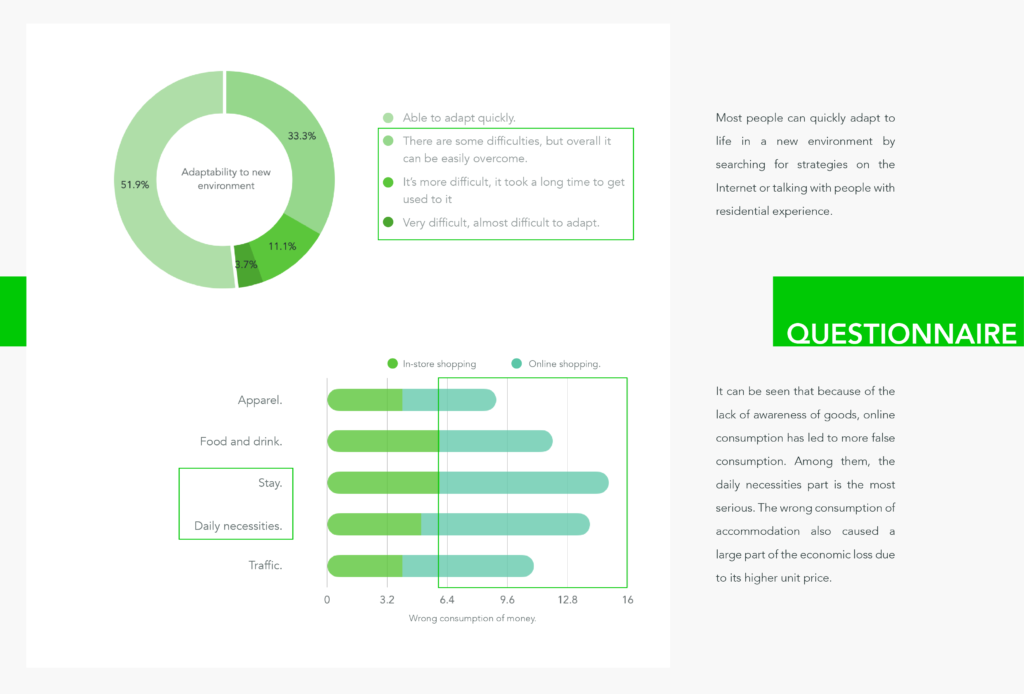
Most people bought goods that they didn’t need, or bought the wrong size so that they could not be used. The complicated return and exchange process makes this problem even more troublesome. Many of the wrong products have become idle items or even rubbish, and these resources have not been put into use. When it comes to the trash link, many recyclable resources are not actually recycled because they are not familiar with the garbage classification policies and habits of various regions. The recycling information marked on the packaging of goods seems to be rarely followed carefully.
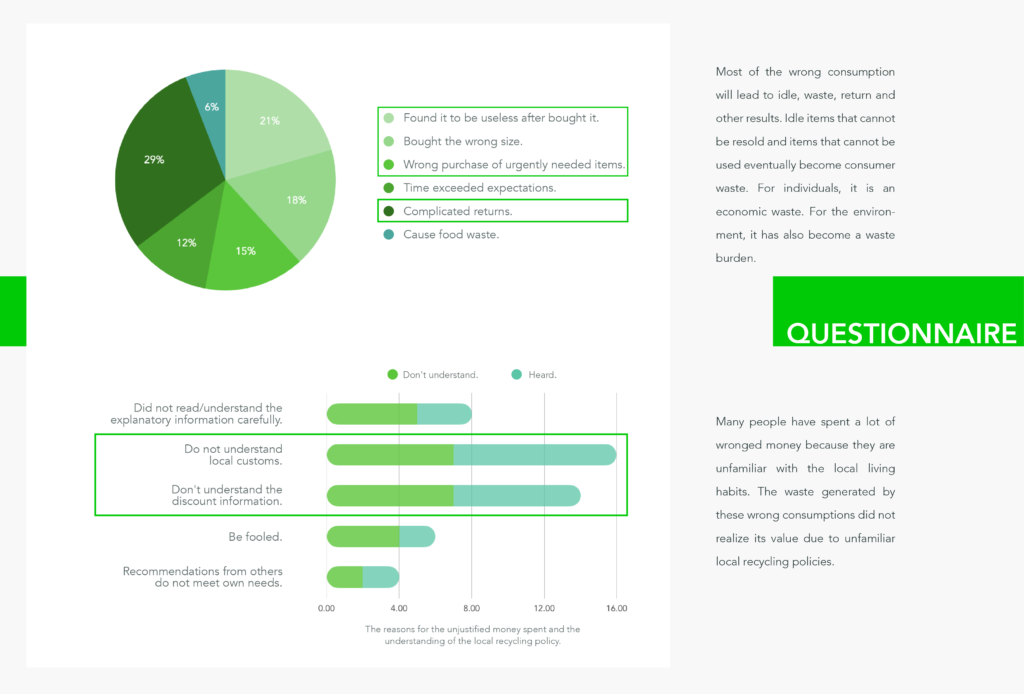
- Related app analysis
I analyzed two popular strategy sharing apps.
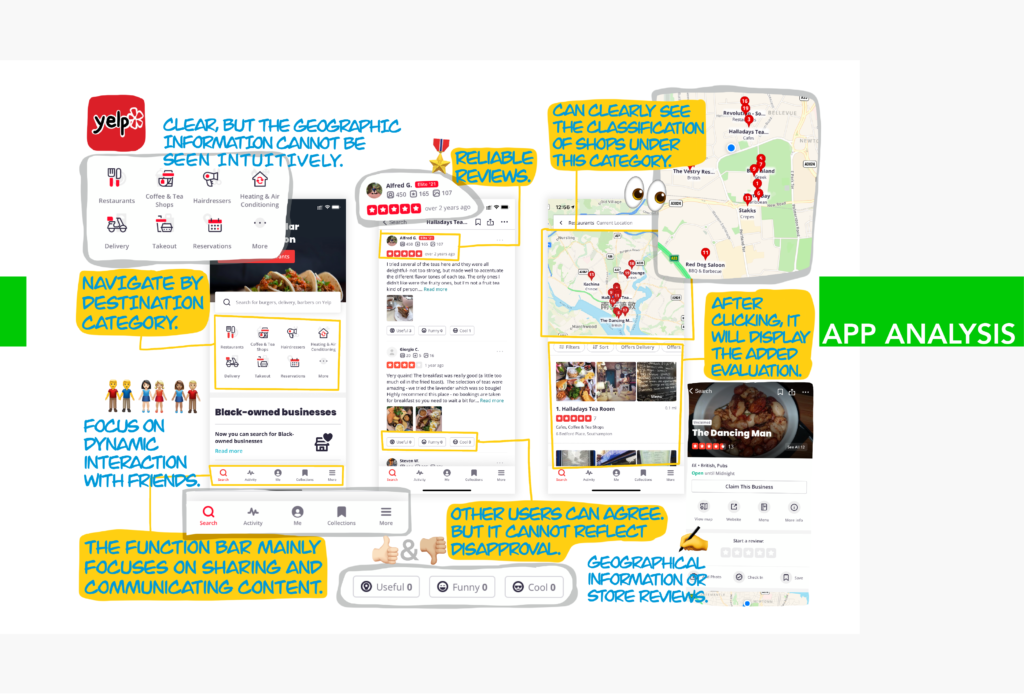
The first one is Yelp, which mainly uses destination classification as navigation. The main information provided to users is the evaluation of the store.

Another popular app in China, Xiaohongshu, is mainly based on content sharing. Store information, product information, guides, etc. are displayed based on content posted by different users. More personal, users need to measure its accuracy by themselves.
I think it may be possible to integrate the functions of these two platforms to form a more practical and reliable function.
- PACT Analysis
Then I did a PACT analysis. My users are mainly international students from university to undergraduate level. They mainly use mobile phones to inquire about life assistance. But the complex information and different platforms make them feel bad, and I need to solve this problem.
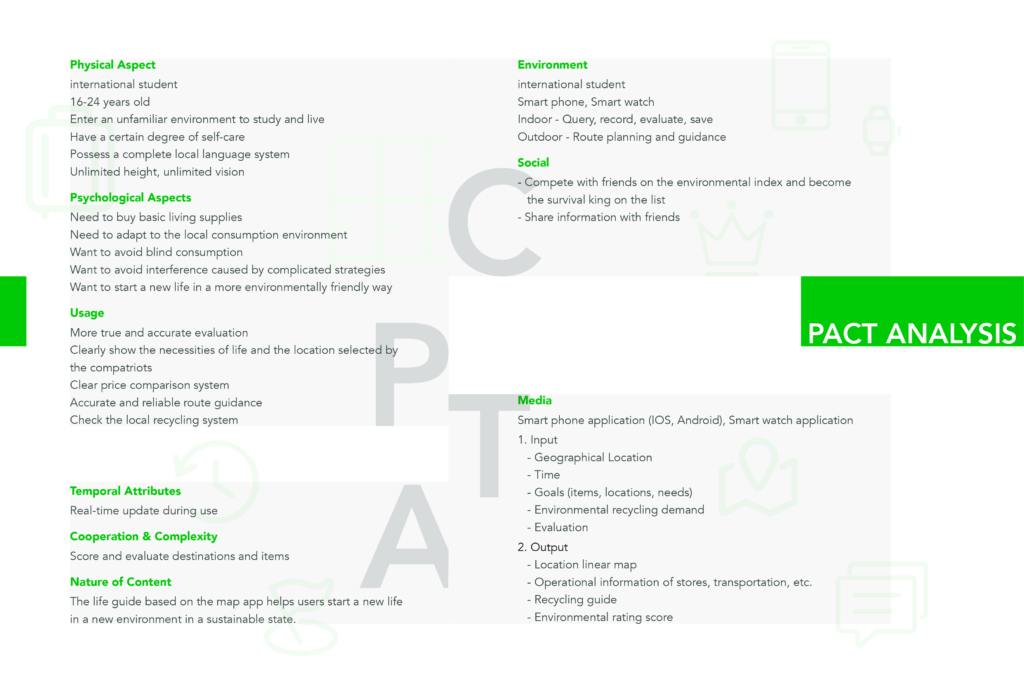
- Personas
This is personas.
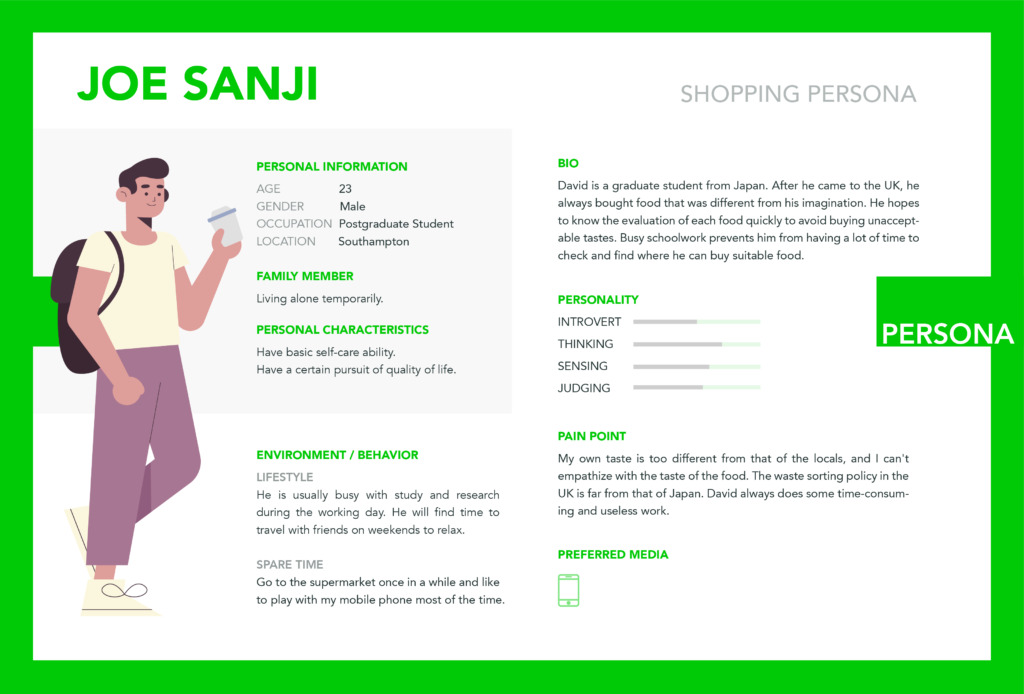
The boy likes to cook by himself, but he always buys inappropriate ingredients. He hopes to get the ingredients that his compatriots can purchase locally, so as to get a better cooking experience.
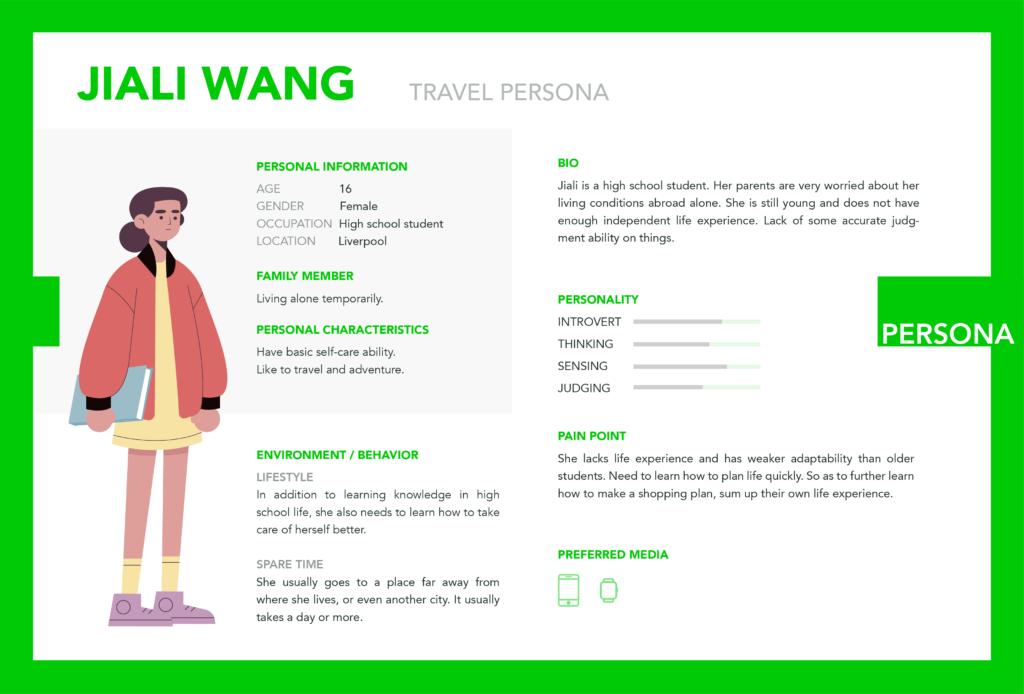
This girl is a high school student. Due to their own lack of life experience, life is basically dependent on the care of the host family. She hopes to exercise her life ability from planning a shopping plan. But the living budget is limited and she needs to shop accurately.

- Initial flowchart
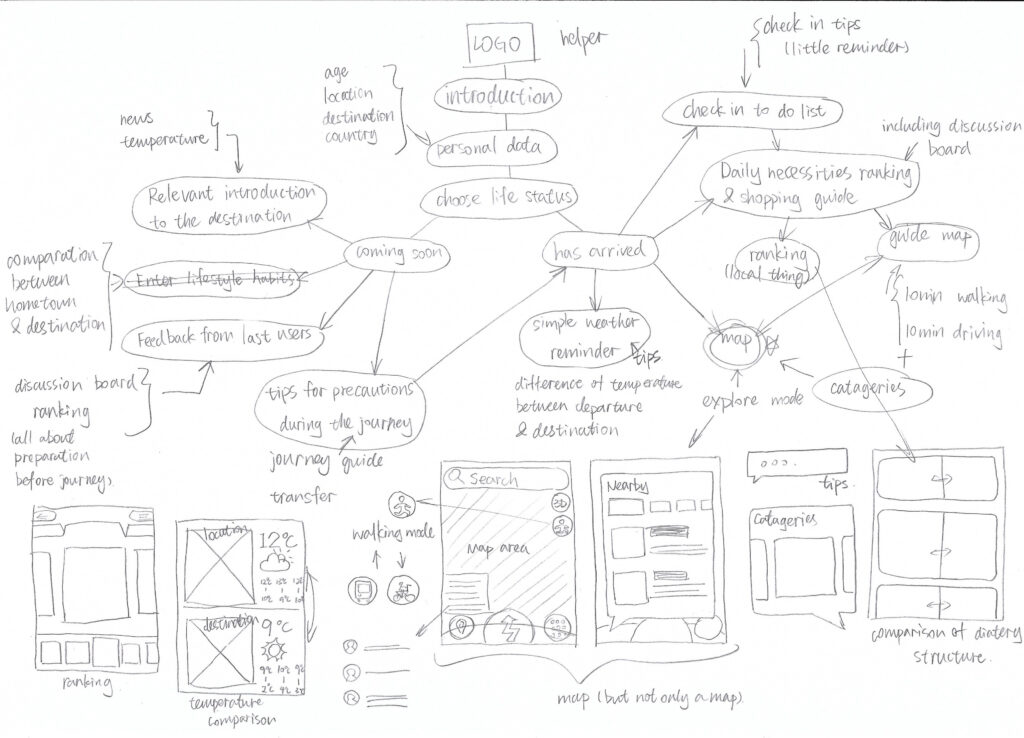
Then I roughly imagined the wireframe of my app. It is mainly divided into pre-departure preparation tips and life guides. Every student who is about to study abroad is a target user. Pre-departure preparation tips will help them prepare their luggage more reasonably according to their living habits and guide them to their destination smoothly. The life guide will provide them with a more suitable shopping guide and unanimous comments from their compatriots after they arrive at their destination. In this way, they will not spend unnecessary money on some commodities that will inevitably become idle items when they first arrive in a new living environment. I’m not sure whether the garbage classification function is still necessary. Maybe you can include recycling information in the product evaluation, but it seems a bit redundant now. I still need to think about this issue again.
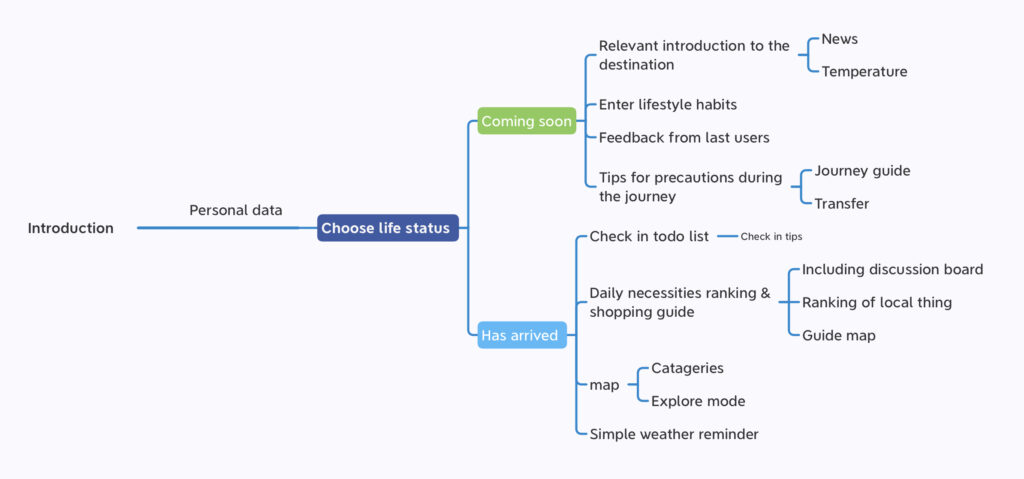
My initial design is an app that covers life guides before departure and after arrival. Its main function is to make a simple comparison of life at the place of departure and destination. Provide users with reference in life. But in the process of advancing, I discovered that just comparing it does not help life. This does not match the results of my research. I hope to be able to combine the navigation function with the content sharing function.
So I improved the whole process.
I drew the draft according to this idea. On the basis of comparison, navigation and content sharing functions are added. The main thing is to combine shopping lists and navigation. Users can plan travel routes according to their own shopping list. This avoids the time wasted by not finding where to buy the goods you need, making the purpose of going out shopping clearer, and reducing unnecessary consumption that may be caused by the behavior of “browsing goods”.
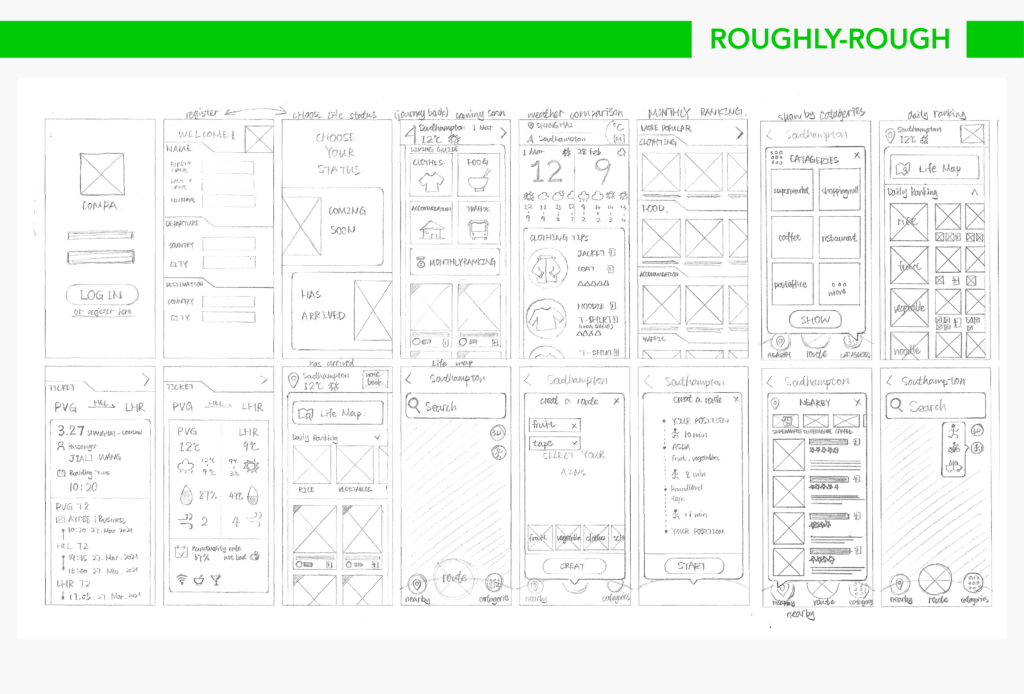
- Testing
Then I tested this idea. The feedback received is mainly that some detailed functions require more detailed consideration.
- The suggestion part before the trip can be deleted to get a clearer travel suggestion.
- Can select by category when creating a map.
- Can directly add to your notes from the leaderboard.
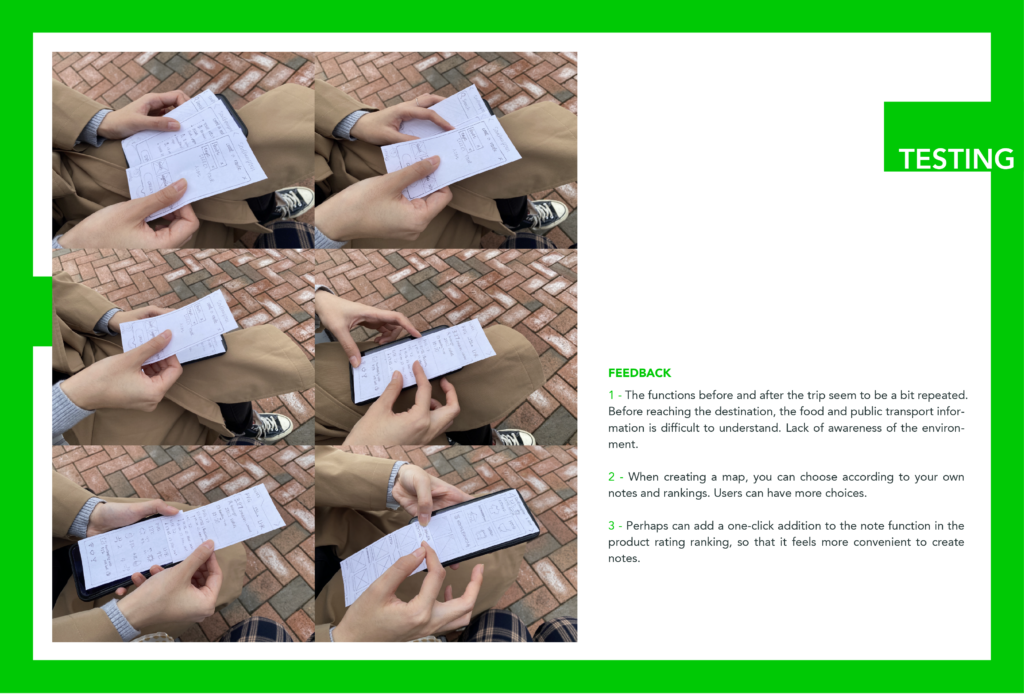
So I revised the design purpose. It will be a note-taking app with life guidance and route planning functions. Its focus is on the combination of content sharing and route planning to make users’ consumption plans more accurate. It saves the user time wasted in the process of extensively browsing the strategy and route planning.
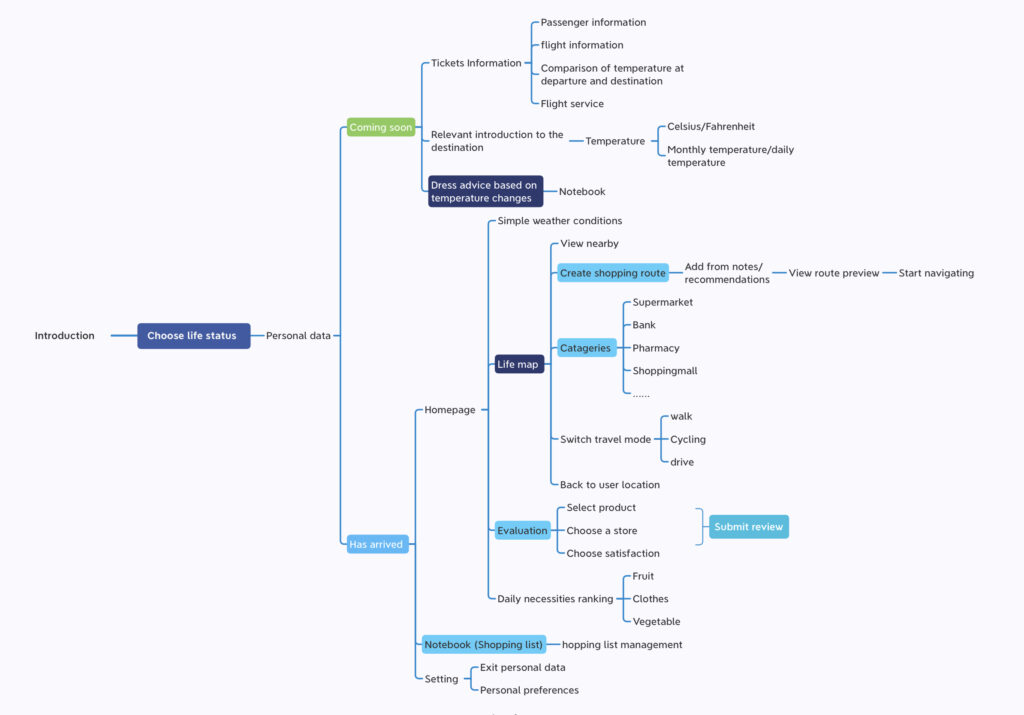
Then I made a low-fidelity prototype.

Here is the wireframe.
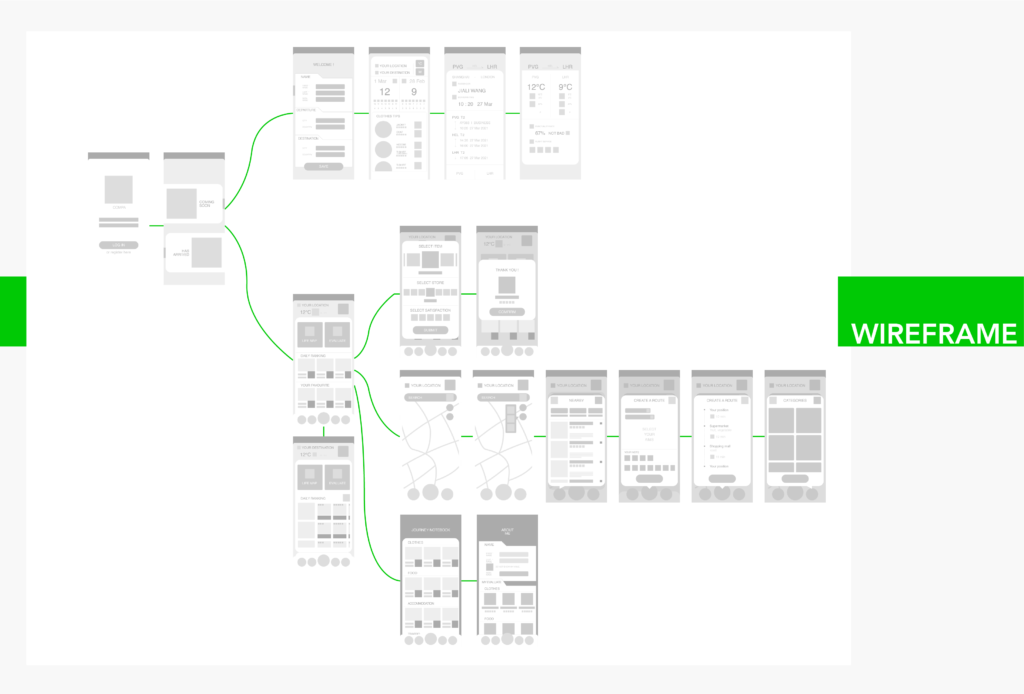
This is my original high-fidelity prototype. After communicating with everyone, I realized that the color saturation of my overall picture is too low. Some icons are even hard to detect. I originally thought that light colors would give people a refreshing and comfortable feeling, but now it seems that light colors have affected the function. I need to change my color scheme.
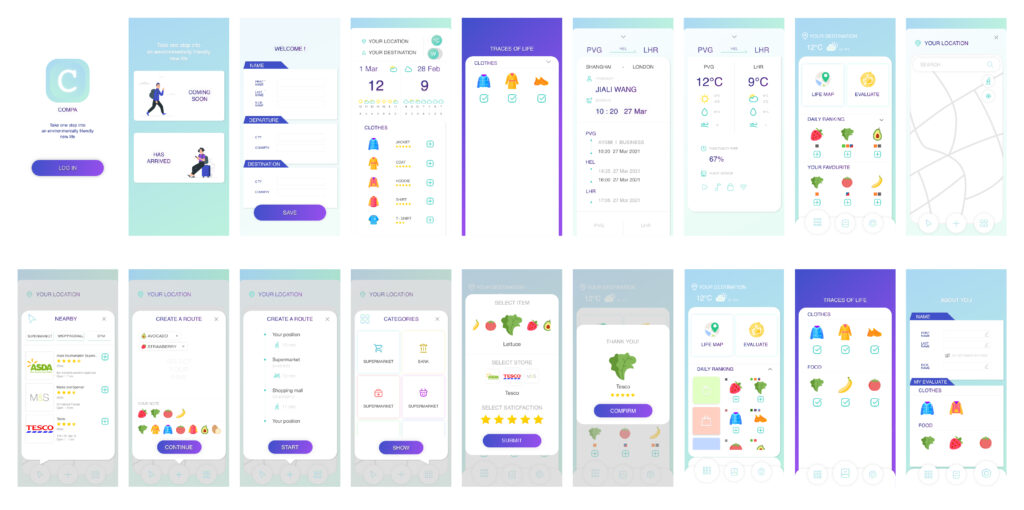

- Final work
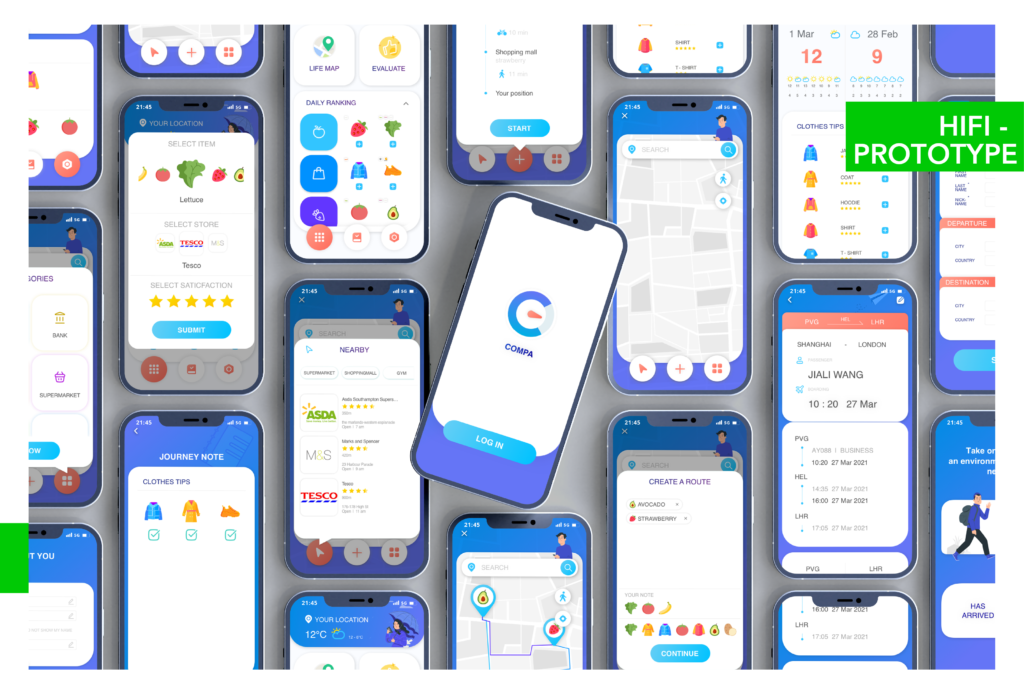
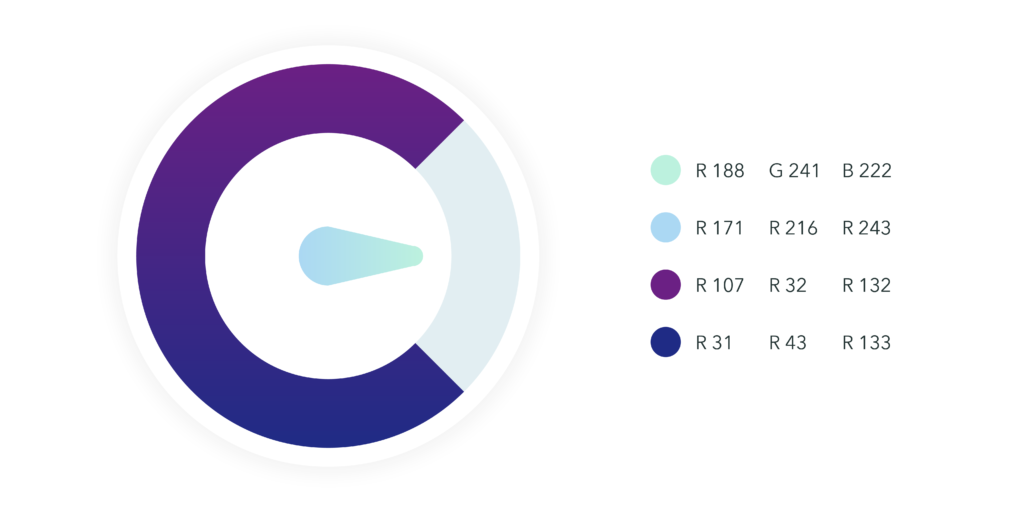
In the logo part, I used the compass element and simply designed the C of the project name COMPA. In addition to the shopping navigation function of the performance item, it also shows that it guides users to cultivate conscious consumption.
Here are some key function about COMPA.
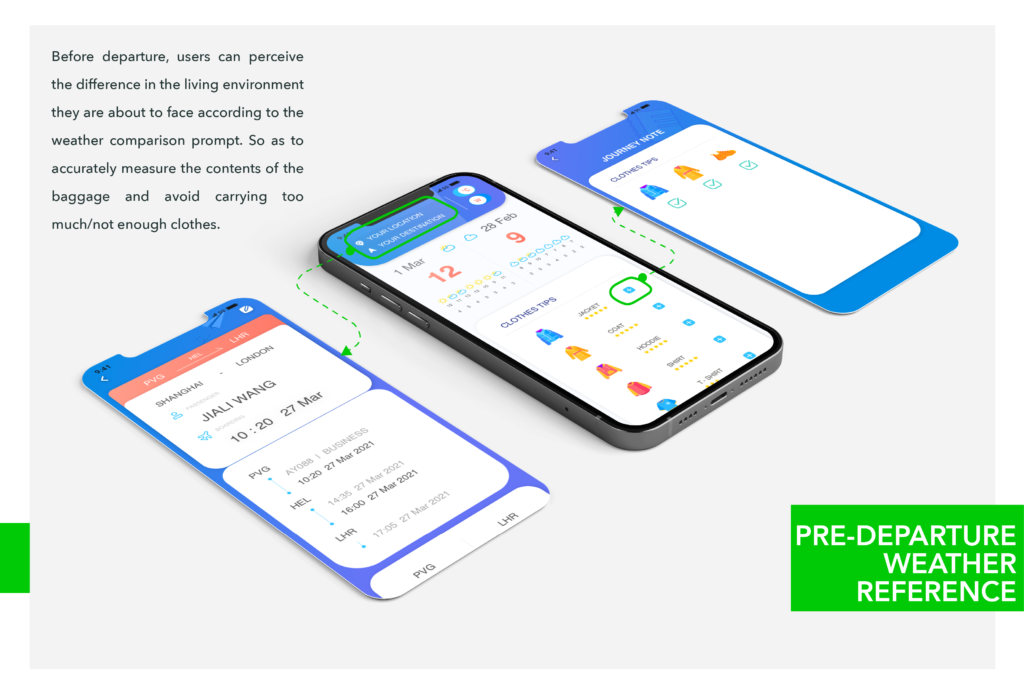
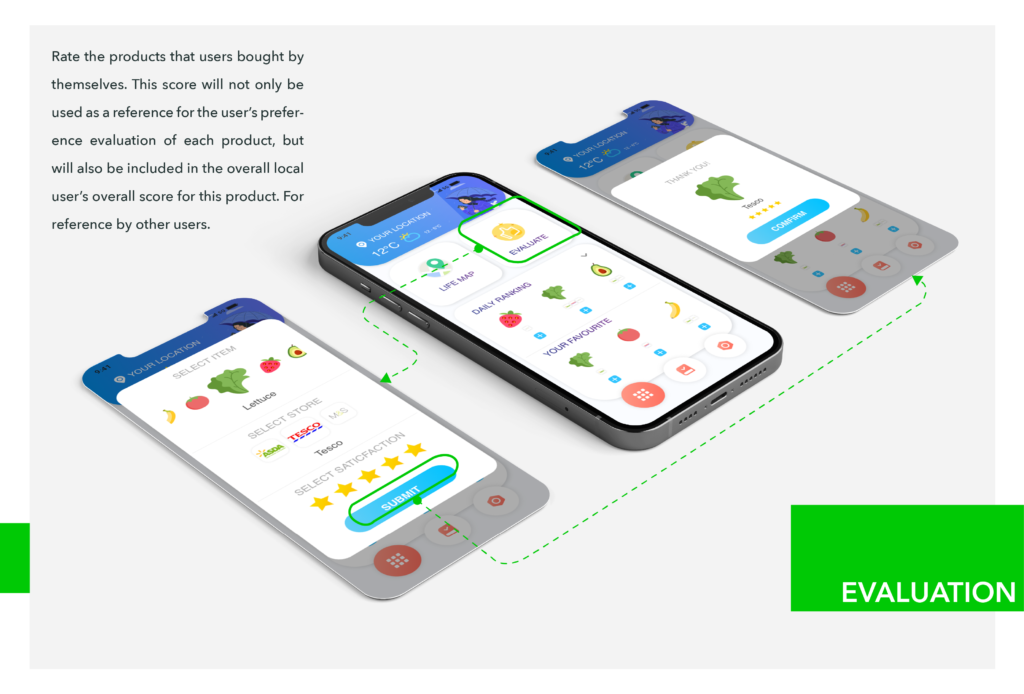
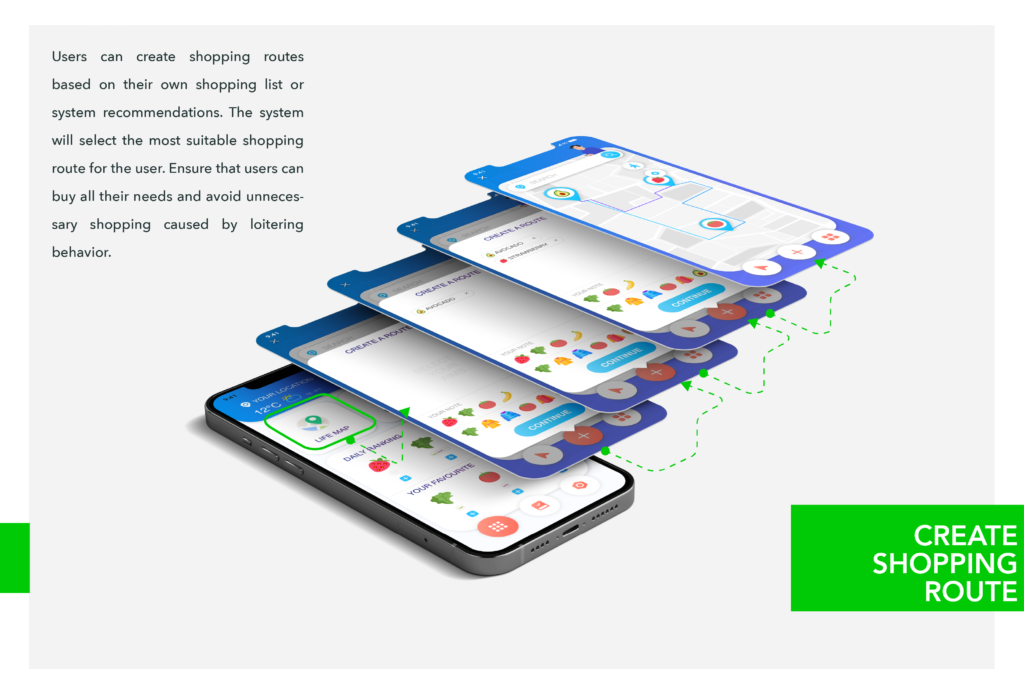
The following is my high-fidelity prototype demo. The video shows part of the production process of the high-fidelity prototype, as well as the complete functional usage of COMPA.
That’s my work in project four. 🐶 Welcome to tell me your opinion in the comments!
